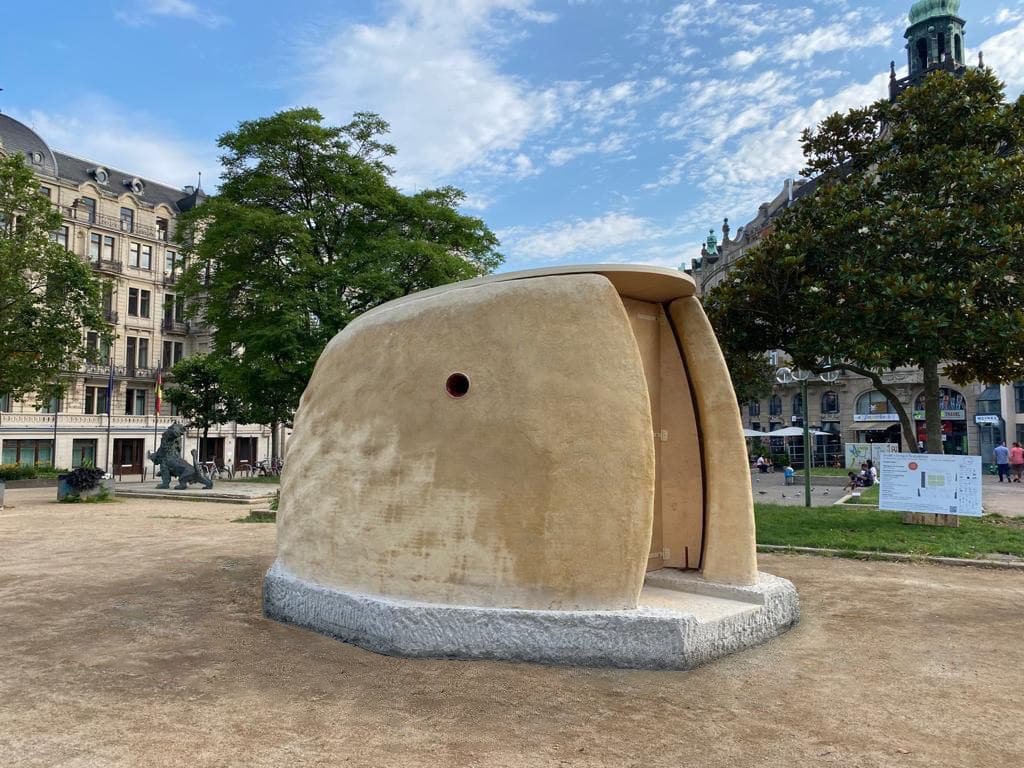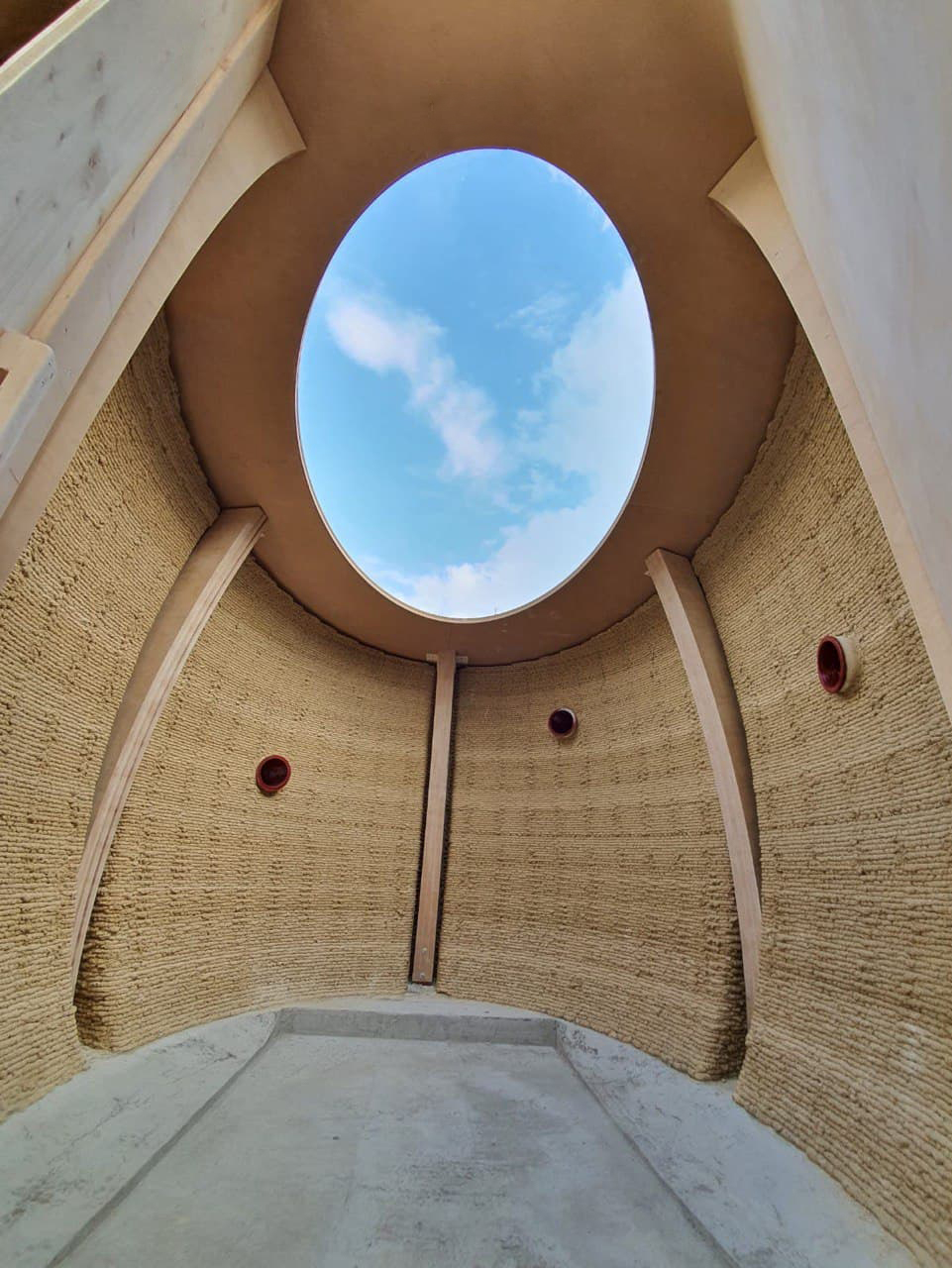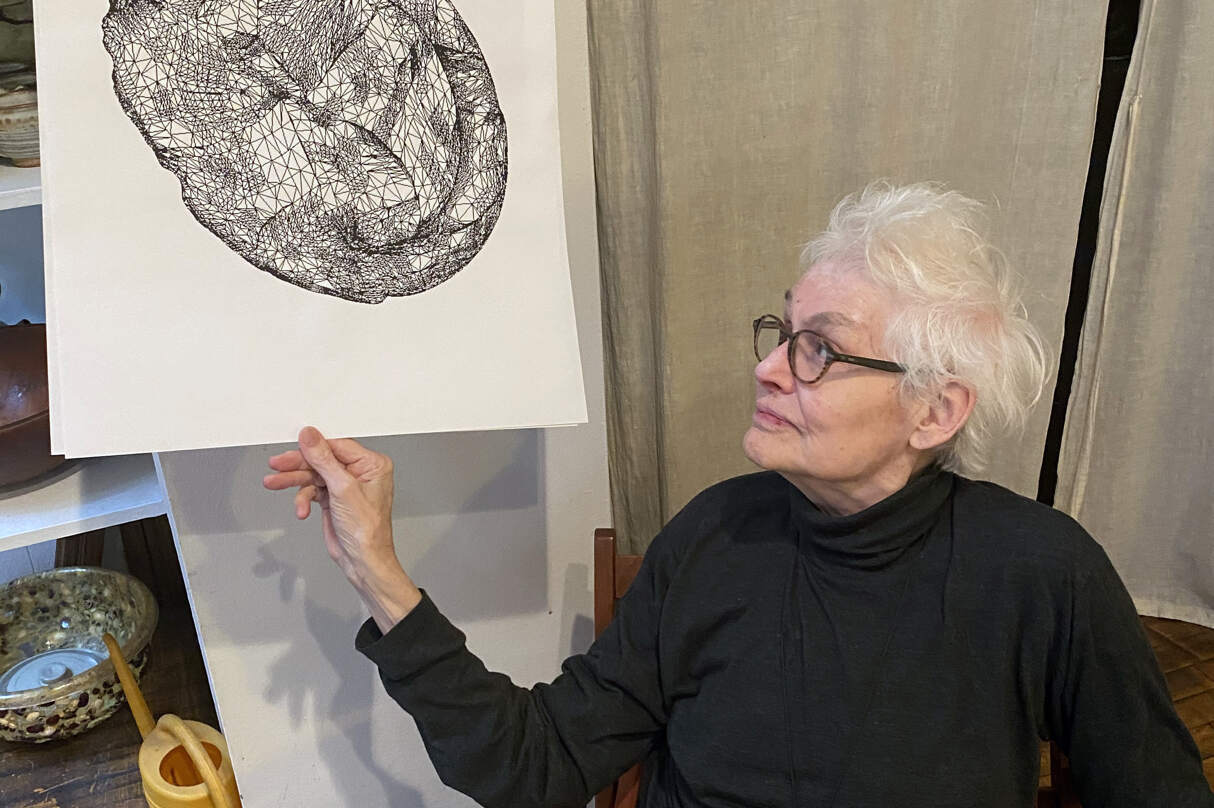
Once again, crane 3D printing company WASP captivates us with a new earthly design that blends art and culture with sustainable living. This time, the innovative Italian firm teamed up with 88-year old American artist Alison Knowles to create a green, livable and sustainable sculpture called “The House of Dust.” The entirely 3D-printed artwork built using natural materials and the company’s flagship modular collaborative crane 3D printing system can be experienced in front of the Museum Wiesbaden in Germany. Moreover, since this is a habitable artwork in a public space, viewers can even book a night experience and sleep inside.

Internal view of the House of Dust by Alison Knowles, 3D printed by WASP. Image courtesy of WASP.
Created by Knowles in 1968, The House of Dust is an evolving artwork that unifies poetry, architecture, and computer science. As a founding member of the 1950s avant-garde Fluxus movement, Knowles has dedicated her life to exploring the nexus between art, technology, and architecture. The House of Dust was originally generated by a computer as a poem. It was coded in Fortran IV on a mainframe Siemens 4004 computer as one of the first computer-generated poems and an early form of artificial intelligence.
The algorithm created quatrains describing different houses and their living situations without repeating before processing its chance set containing thousands of unique possibilities, explained Knowles. At the time, her collaboration with the computer highlighted the underlying arbitrariness of language, demonstrating how words acquire different meanings through structural relationships and shifting contexts.

Alison Knowles’s original House of Dust sculpture in Burbank, California. Image courtesy of Alison Knowles.
After winning a Guggenheim grant for the pioneering work, she translated the computer poem into the first architectural structure in Chelsea, New York, which was later transported to Cal Arts in Burbank, California. There, Knowles taught her classes inside the House of Dust. Here is the quatrain excerpt from Alison Knowles poem that was used as inspiration to build the public sculpture:
“A house of dust
On open ground
Lit by natural light
Inhabited by friends and enemies”

Alison Knowles in 2021 holding a sketch for the 3D printed structure. Image courtesy of WASP.
Today, the visual artist re-proposes her masterpiece through automated additive construction, claiming that “the House of Dust has been waiting for this technical breakthrough.” Knowles described WASP as representing the synthesis of technological advancement in the dialogue between man and technology and between man and new ways of living. The result of their joint efforts is a novel sculpture at the forefront of sustainable housing of the future.
The 16 square meter artwork required 50 hours of printing, 500 machine codes (G-code), 165 layers of 15 mm, 15 km of extrusion, and 8 cubic meters of natural materials, including clay, wood, and concrete. At 2.5 meters high, the structure showcases a texture similar to what we have seen in other WASP projects. The engineers remained true to the artist’s original design, and the new structure is similar to Knowles’ Chelsea exhibit, maintaining the original concepts described in the poem.
WASP considers that the transformation of ways of living and working in a world influenced by globalization, digitization, and climate change is one of the central themes of our time. In fact, company founder Massimo Moretti said, “developing processes to give a home as a birthright for every man is a responsibility of the most advanced societies. The humblest materials, the waste from the agro-food chain, and the raw earth deposited by a machine at the point and in the quantity proportionate to transform the shapeless matter at house is the process that WASP is developing. Living in a sculpture is the crystallization of the process.”

Visitors can stay overnight in the House of Dust by Alison Knowles, 3D printed by WASP. Image courtesy of WASP.
In March 2021, TinyBE, a global platform for artistic visions of sustainable forms of living, organized a crowdfunding campaign to support the creation of the sculpture and asked WASP to provide its additive construction crane. The campaign turned out to be a success and raised €14,013 ($16,541), much more money than the set goal of €10,000 ($11,800). It also attracted numerous public and private supporters, like Frankfurt’s head of culture, Dr. Ina Hartwig, the Frankfurt Rhein Non-profit Cultural Fund, and the Hessian Ministry of Science and Art. The printing started on June 15, 2021, and the final result was presented just two weeks later.
Throughout the entire project, the public was invited to observe how the House of Dust returned to life through 3D printing. In an interview with WASP, Knowles described the building process as an opportunity to realize the structure in an “on-site intermedia-action-event.” This means that “while the poem is printed and read, it meets up with a three-dimensional structure also being printed by computer.”
The result of this unique experience is a beautifully crafted sustainable space temporarily exhibited until September 26, 2021. Like WASP’s previous innovative projects, this livable sculpture is at the intersection of vanguard art, architectural mastery, and sustainable needs, creating a futuristic habitat that could be replicated wherever natural resources are scarce.


